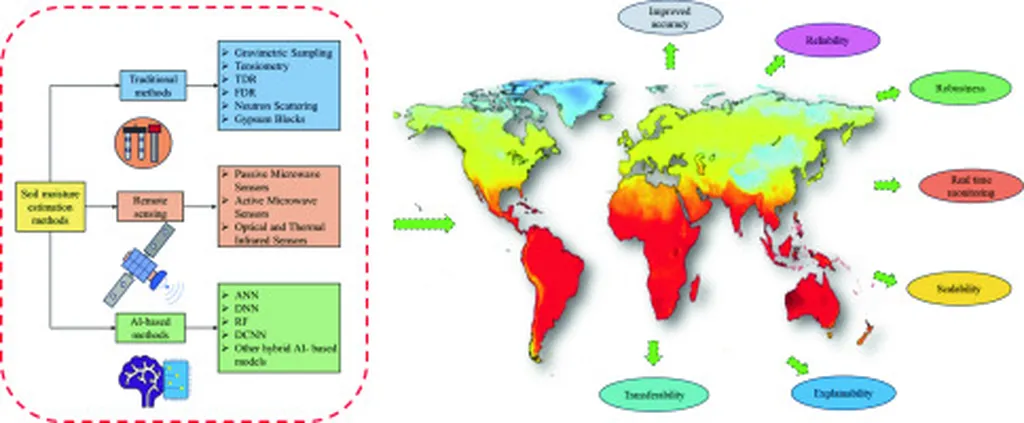In the vast, sun-scorched landscapes of West Africa’s drylands, where every drop of water is a lifeline for crops and communities, a groundbreaking study has emerged that could redefine how farmers and land managers approach soil moisture monitoring and conservation. Published in the journal *Remote Sensing*, the research led by Meron Lakew Tefera from the University of Sassari in Italy, integrates cutting-edge remote sensing technology, in situ data, and machine learning to offer a high-resolution solution to a longstanding challenge: accurately predicting soil moisture and assessing the impact of land conservation practices.
The study’s innovative approach combines a Long Short-Term Memory (LSTM) model with Random Forest gap-filling to predict soil moisture with remarkable precision. The model’s performance was impressive, achieving an R2 value of 0.84 and a Root Mean Square Error (RMSE) of 0.103 cm3 cm−3, outperforming existing SMAP satellite estimates by approximately 30% across key accuracy metrics. This level of precision is a game-changer for semiarid regions where data scarcity has historically hindered effective land management.
“Accurate soil moisture prediction is crucial for optimizing agricultural practices and conserving land in dryland ecosystems,” said Tefera. “Our study demonstrates that by leveraging remote sensing and machine learning, we can provide farmers and land managers with the tools they need to make informed decisions.”
The research applied this advanced modeling technique to 222 field sites in northern Ghana, focusing on the impact of stone bunds—low stone walls built across slopes to reduce soil erosion and improve water retention. The results were striking: fields with stone bunds maintained 4–6% higher soil moisture than non-bunded fields, particularly on steep slopes and in areas with low to moderate topographic wetness. This finding provides quantitative evidence of how nature-based solutions can enhance water retention and climate resilience in dryland agricultural systems.
The commercial implications of this research are profound. For the agriculture sector, the ability to predict soil moisture with high accuracy can lead to more efficient irrigation practices, reduced water waste, and improved crop yields. Farmers can make data-driven decisions about when and how much to irrigate, optimizing resource use and potentially increasing profitability. Additionally, the study’s findings on the effectiveness of stone bunds can encourage the adoption of similar conservation practices, promoting sustainable land management and long-term productivity.
Beyond the immediate benefits, this research opens the door to future developments in agritech. The integration of remote sensing and deep learning models can be expanded to other regions and crops, providing a scalable solution for global agricultural challenges. As Tefera noted, “This approach has the potential to be applied in various dryland ecosystems, offering a powerful tool for climate-smart agriculture.”
The study’s success also highlights the importance of interdisciplinary collaboration. By combining expertise in remote sensing, machine learning, and agronomy, the research team has demonstrated the power of integrating diverse fields to address complex environmental and agricultural issues. This holistic approach is likely to inspire further innovation in the agritech sector, fostering a new era of data-driven, sustainable farming practices.
As the world grapples with the impacts of climate change and the growing demand for food, research like this offers a beacon of hope. By harnessing the power of technology and nature-based solutions, we can create more resilient agricultural systems that support both people and the planet. The study, led by Meron Lakew Tefera from the Department of Agricultural Sciences at the University of Sassari, Italy, and published in *Remote Sensing*, is a testament to the transformative potential of interdisciplinary research in the field of agritech.

